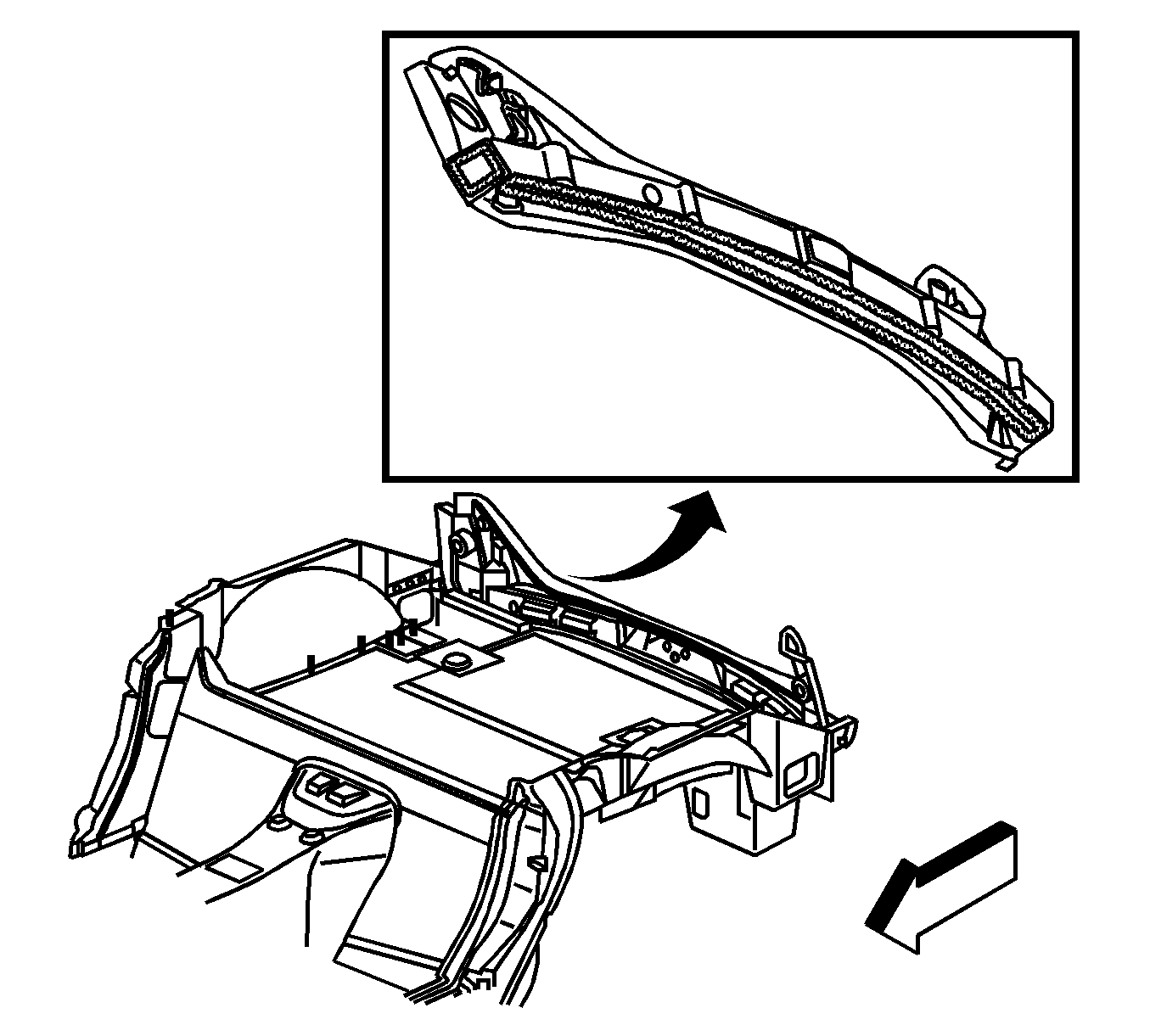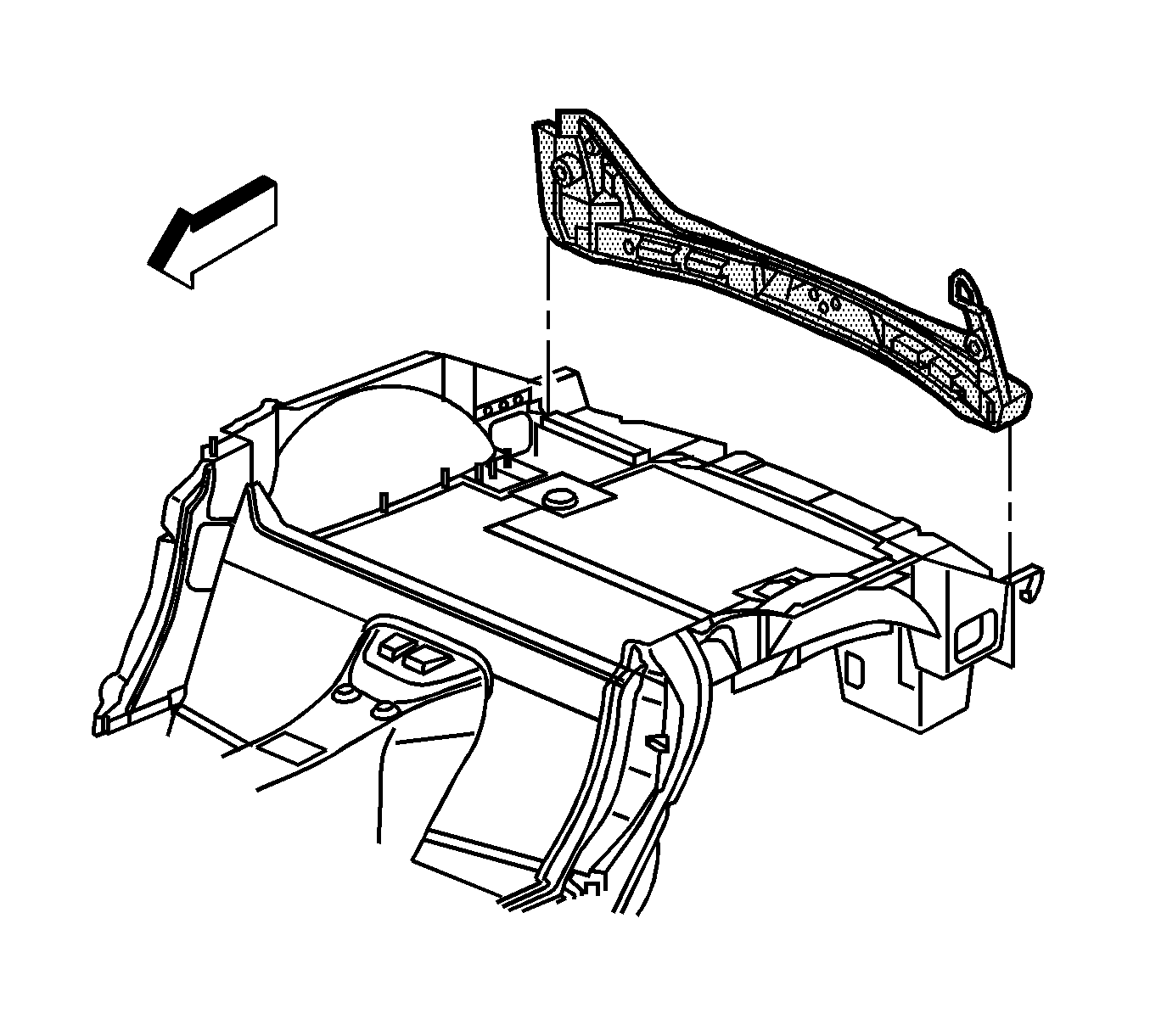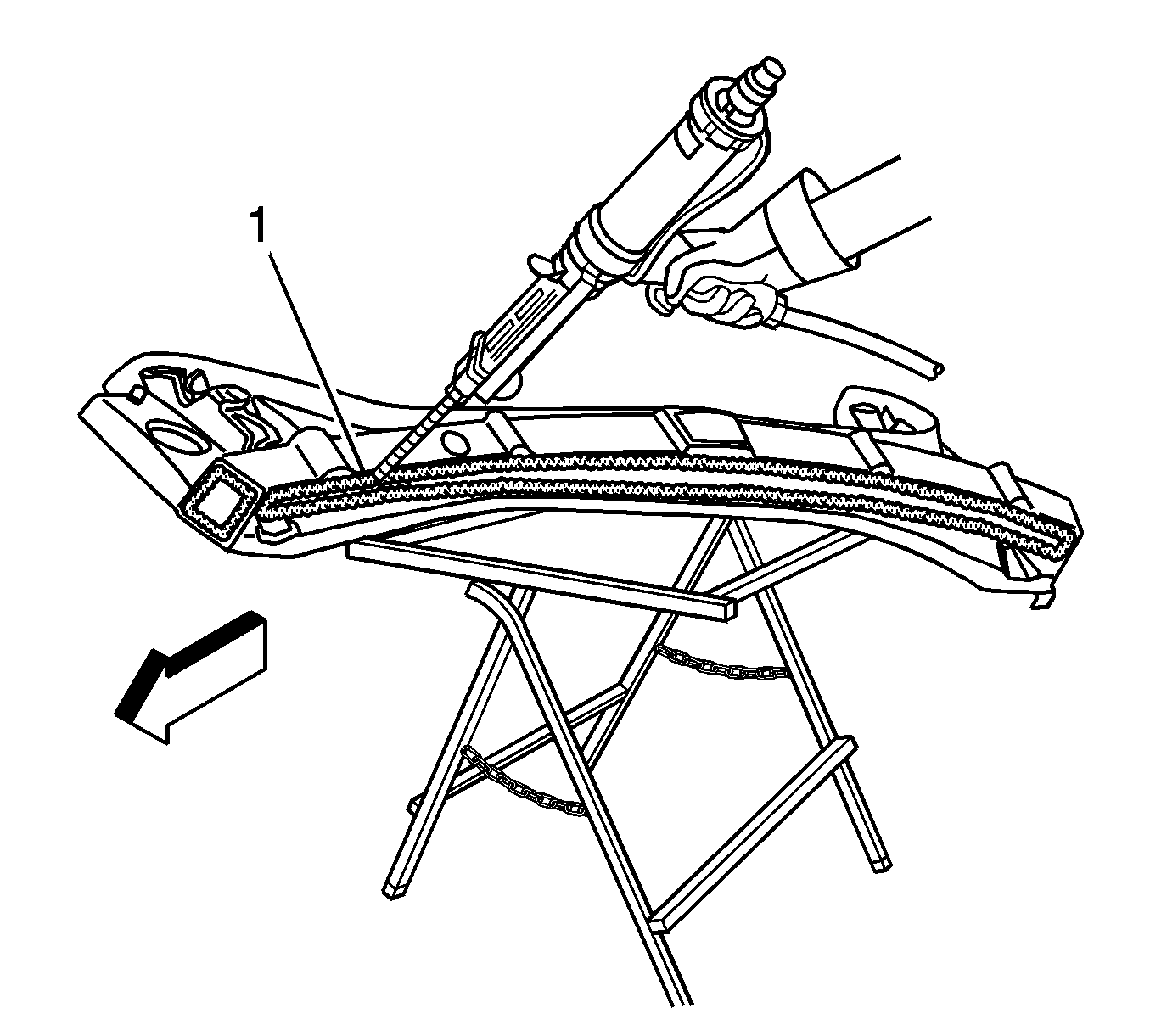For 1990-2009 cars only
Tools Required
J 42058 Frame Adapter Clamp
Removal Procedure
Caution: Refer to Approved Equipment for Collision Repair Caution in the Preface section.
The rear end panel is made of sheet molded compound (SMC), and is bonded to the rear compartment panel with structural adhesive.
- Disable the SIR system. Refer to SIR Disabling and Enabling .
- Disconnect the negative battery cable. Refer to Battery Negative Cable Disconnection and Connection .
- Remove all related panels and components.
- Remove the rear end panel by applying heat and pry to detach adhesive along the bonding surface.
- Remove the rear end panel from the vehicle.
- Save any and all brackets, mounting studs, and accessories for transfer to the new rear end panel.
- Note the location of the adhesive and remove all remaining loose adhesive.
- Inspect the rear structure and frame rails for damage.
- Restore as much of the damage as possible to the factory specifications. Refer to Dimensions - Body .
- Use J 42058 to secure the vehicle if pulling and straightening is required.


Installation Procedure
- Before applying adhesive dry fit the rear end panel for proper fit and alignment.
- Clean and prepare all bonding mating surfaces according to adhesive manufacturer's recommendations.
- Apply a consistent bead of structural adhesive 10 mm (3/8 in) in diameter to the rear compartment panel and to all original bonding surfaces. Refer to Sheet Molded Compound (SMC) Panel Bonding .
- Install the rear end panel to the vehicle.
- Apply pressure to the rear end panel to set the adhesive.
- Clamp or mechanically fasten the rear end panel into place as necessary.
- Remove any excess adhesive.
- Install all related panels and components.
- Connect the negative battery cable. Refer to Battery Negative Cable Disconnection and Connection .
- Enable the SIR system. Refer to SIR Disabling and Enabling .
Important: Shims may be necessary to achieve proper panel alignment.


